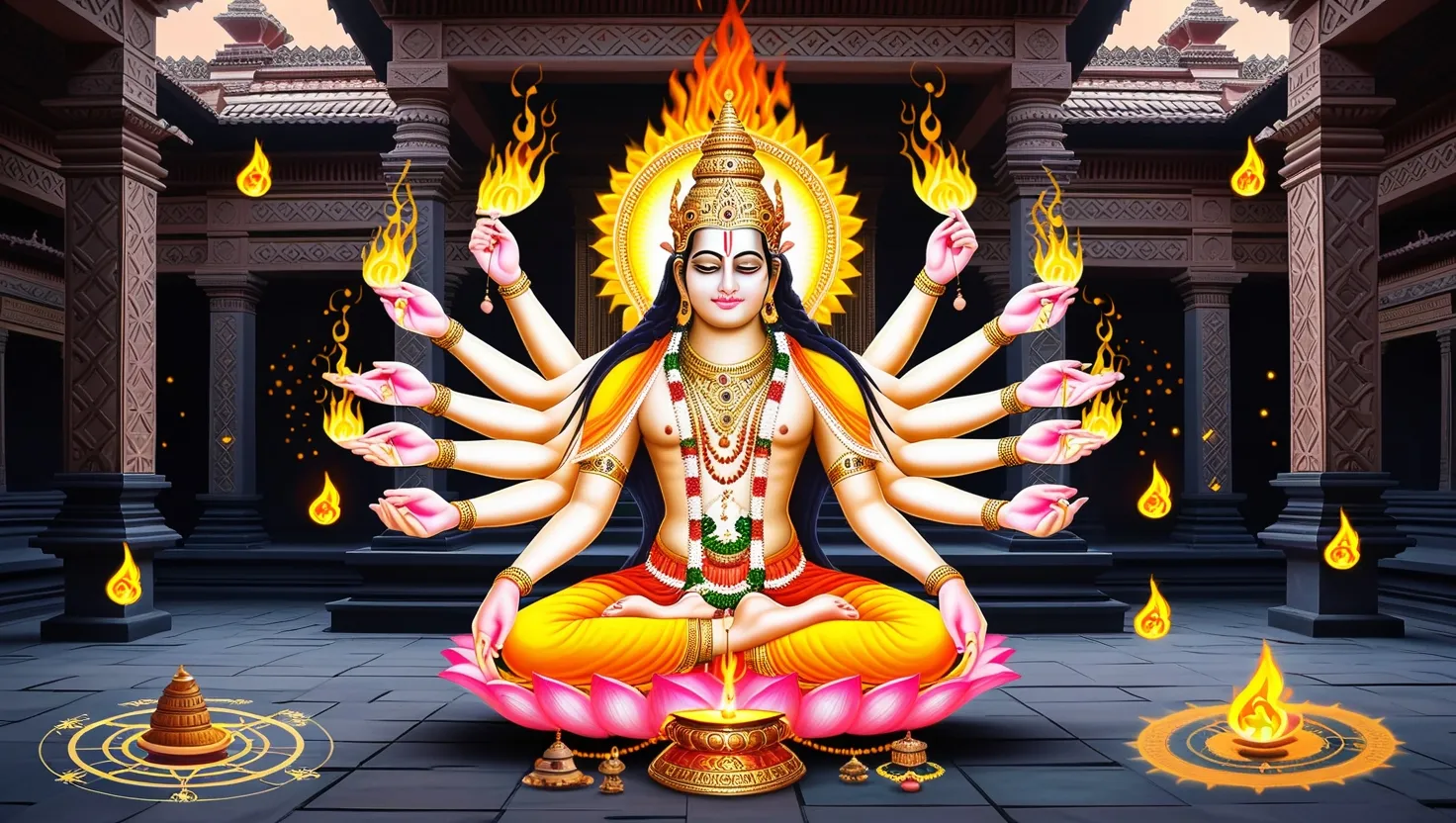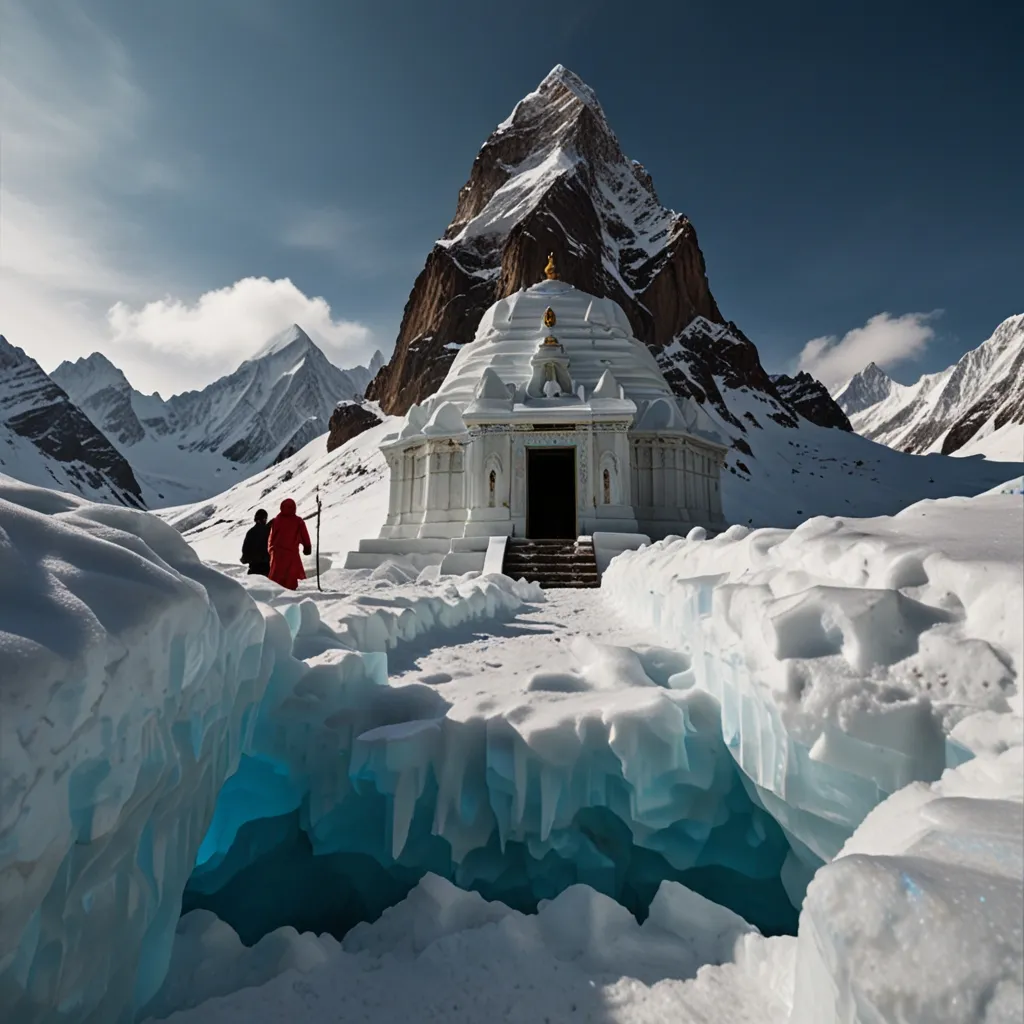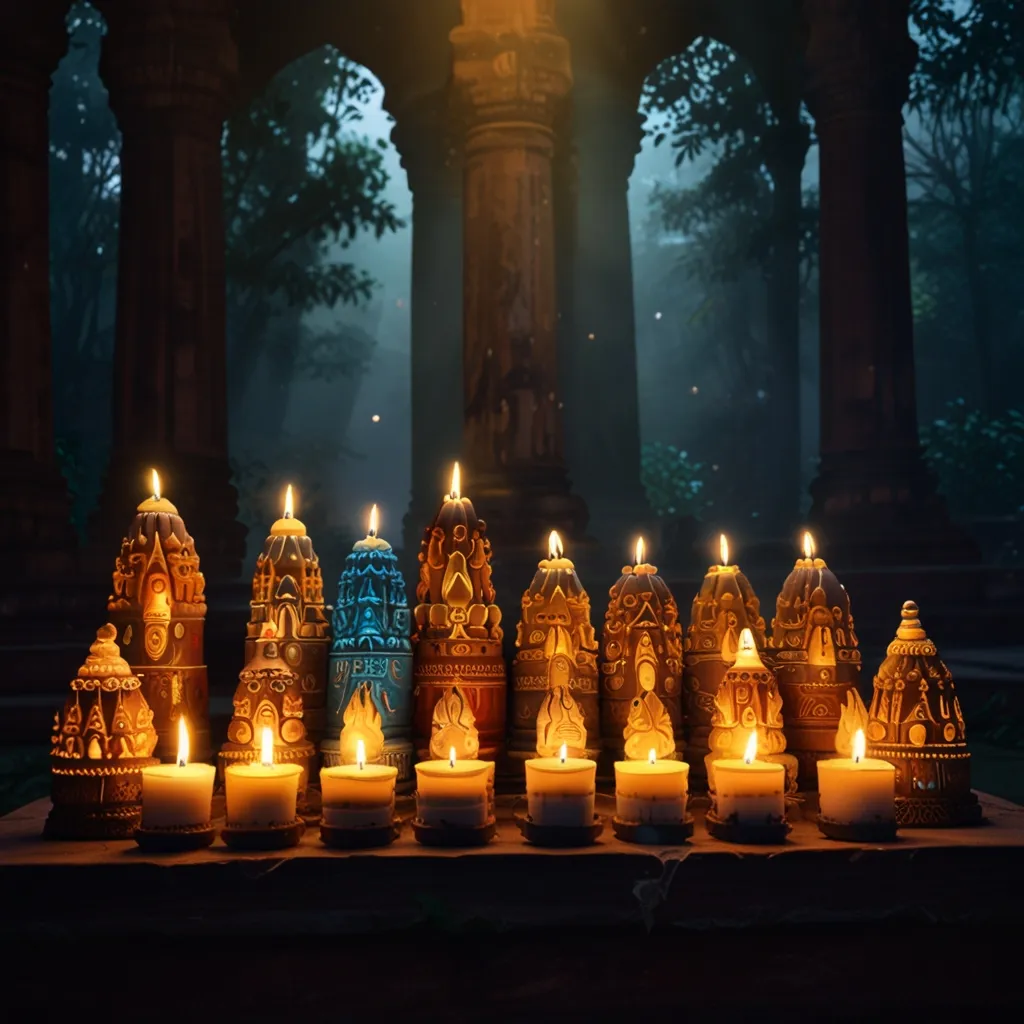If I were to introduce you to the Agni Purana for the first time, I’d start by pointing out that its scope is nothing short of astonishing. Unlike some Hindu texts that stick to myth and cosmology, the Agni Purana reads like an ancient handbook for living—with practical advice about rituals, urban planning, medicine, the arts, and more. It’s as though the fire god Agni wanted every seeker, king, and poet to find something essential for their journey.
One of the Agni Purana’s fascinating features is its focus on rituals—not merely as inherited habits but as living practices. Think about the installation of deities in temples. What we might simply see as a statue is, for followers of these rites, the literal arrival of divinity into a physical form. The Purana goes into granular detail about crafting and consecrating murtis. The precision here isn’t just about craftsmanship—it’s about inviting and sustaining the sacred in ways that could be replicated across hundreds of temples, creating a spiritual network that stretched from village shrines to monumental temple complexes.
But let’s pause here: why were these rituals so important? The Agni Purana suggests that these acts aren’t primarily to please some distant deity; rather, they create the right conditions for harmony in the human world. Through ritual, we align ourselves with cosmic order. In a sense, it’s like tuning an instrument until it resonates with a symphony already playing out across the universe. Isn’t there something compelling about the idea that, with each ritual, we participate in a cosmic conversation?
“When one lights a fire for worship, one lights the fire of the self.” – Anonymous Sanskrit saying
Let me take you on a quick trip through time. Imagine a bustling city in ancient India, its layout following rules derived from the Agni Purana’s teachings on Vastu Shastra. Every street, doorway, and sanctuary is aligned according to cosmic coordinates. The city isn’t just a collection of buildings but a living organism—as alive as the people within it. The Purana’s guidance on architecture expresses a subtle truth: where and how we build reflects our understanding of the universe and our aspirations for life on earth. It asks us: Are our homes and cities making us more peaceful and prosperous, or are they disturbing the natural order?
You might be surprised to learn that the Agni Purana dives deeply into medical knowledge. Ayurveda, today so often repackaged into spa treatments and diets, is treated here as a vital support for spiritual life. Health, says the Purana, isn’t an end in itself; a clear mind and robust body are necessary so we can focus on higher duties—be they family, learning, or devotion. But there are even recipes for herbal medicines alongside seasonal regimens, positioning medicine and ritual as partners in supporting human flourishing.
Every time you listen to an Indian classical recital, watch a traditional play, or read a Sanskrit poem, you’re encountering echoes of advice found in the Agni Purana. This text goes so far as to outline rules for constructing verses, composing plays, and using gestures in performance. There’s even unusual anatomical detail, cataloging the actions of individual body parts—nose, chin, lips, hands, and feet—essential for the subtle gestures in classical dance and drama. It seems remarkable that a spiritual work would include choreography, but for the authors of the Purana, artistic expression is as sacred as ritual itself. Can you recall a moment when a poem or a performance seemed to shift something deep inside you? The Agni Purana treats this as a sacred possibility.
“Art enables us to find ourselves and lose ourselves at the same time.” – Thomas Merton
Now, let’s turn to statecraft. While the Purana seems preoccupied with ritual, it also serves as an instruction manual for rulers. There are candid passages on how a king must behave: dispensing justice, balancing state finances, conducting alliances, and preparing for war. What’s striking is the underlying message that kingship isn’t just power; it’s stewardship, hemmed in by dharma—the moral order. Reading these chapters, I’m reminded that the ideal of leadership here is less about self-interest and more about relentless care for one’s people. The welfare of the realm, it suggests, is a sacred trust.
Of course, the Agni Purana doesn’t shy away from the metaphysical. Its pages are filled with descriptions of realms beyond this life—multiple hells and heavens, each a consequence of past deeds. But in a subtle twist, these aren’t just faraway places but states shaped by consciousness. Each action has its consequence, and it’s the accumulated effect of these choices that determines where an individual finds themselves after death. Here’s a crucial insight: the text is less concerned with scaring its readers into virtue than with laying out a nuanced vision of cause and effect. Our day-to-day decisions, no matter how small, ripple through the fabric of reality. Have you ever wondered about the long shadows your deeds might cast?
“He who does not act for fear of doing wrong does wrong by inaction.” – Mahatma Gandhi
Let’s not lose sight of the Purana’s most ambitious theme: liberation, or moksha. The final chapters map out pathways to freedom from the cycle of rebirth. The instructions for meditation and yoga here are practical, intended for real seekers. There’s a beautiful humility in the idea that even the highest goal—breaking free from all suffering—is achievable through human effort and disciplined practice. The text is saying: you don’t need to isolate yourself on a mountain. Begin where you are, with the tools around you.
But the Agni Purana’s ritual spirit extends beyond temples and altars. Everyday acts, from cleaning a home to preparing a meal, can be charged with sacred intention. Did you know, for instance, that certain fire rituals are meant not just for gods but for purifying environments and healing communities? It’s possible to read this Purana as an early treatise on ‘applied spirituality’, insisting that every dimension of life carries a hint of the holy.
It’s also worth noting the way this text intersects with the advancement of science and mathematics in ancient India. There are allusions to measurements, geometric principles, even rules of grammar. Surprisingly, some commentators argue that the Agni Purana anticipates parts of the later Natyashastra and other treatises—suggesting the cross-pollination of sacred lore with practical sciences. Isn’t it rare to see a single work show reverence for the spiritual and practical with such seamlessness?
As I read and reflect, I’m struck by the text’s insistence that everything we do counts. There are rituals for rain and sun, for healing and learning, for private contemplation and public celebration. The message is clear: life is multidimensional, and the sacred can be engaged from any angle. Even the domains we think of as secular—medicine, politics, the arts—are potentials for spiritual realization if approached with wisdom and care. What if we lived every day with this kind of awareness?
“Do not seek illumination, only cease to cherish opinions.” – Seng-ts’an
The Agni Purana also carries a certain democratic charm. Unlike texts meant only for priests or kings, its contents are scattered enough to suggest that every reader could find their portion—something to improve health, to clarify the mind, to guide a community. The knowledge isn’t cordoned off; it’s available to the determined, the practical, the curious. Even its repeated details serve a purpose, as if repeating rituals and rules helps absorb them into the collective fabric.
I find it valuable to linger on the Purana’s treatment of the consequences of actions. In its vision, every act—ritual or mundane—sets off patterns that shape the world, society, and even unseen realms. This naturally raises questions: How do our daily choices shape the broader fate of communities? Are there consequences that outlive us? Does this encourage responsibility or merely anxiety? The Purana seems to gently insist that, empowered with knowledge, we can choose actions that benefit ourselves and others.
If you’re the type who wonders about the visible and invisible forces that shape life, the Agni Purana makes an intriguing companion. It freely mixes practical wisdom with mythic thought, investigation with revelation. I think its enduring value lies not in strict adherence to prescriptions but in the invitation to see the world as interconnected, every act, thought, and aspiration stitched together by a shared logic.
As I close the pages of the Agni Purana, I carry away a series of questions rather than conclusions. What rituals shape my own life—conscious or unexamined? How am I constructing and inhabiting the spaces I move through? What practices keep body, mind, and community whole? And in seeking knowledge or freedom, am I tending to both the visible and invisible threads that connect me to others? Perhaps the enduring gift of this ancient text is the nudge to keep asking more of my daily living—and to see each realm of experience as brimming with forgotten meaning and sacred possibility.






